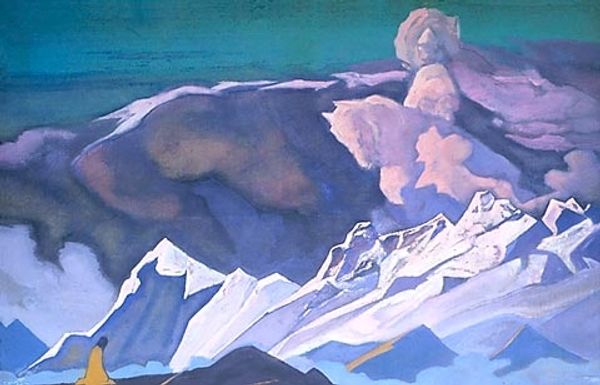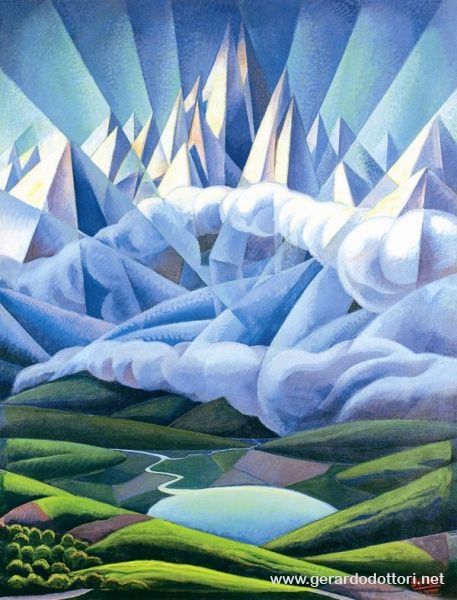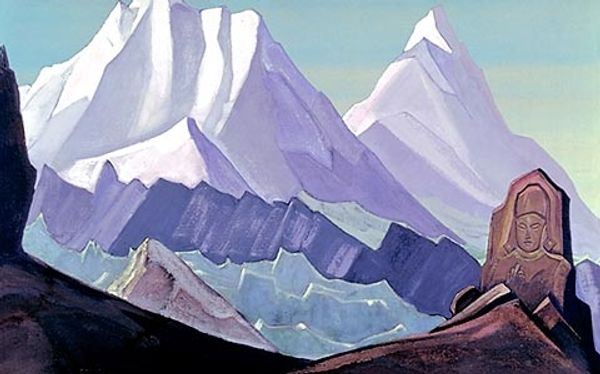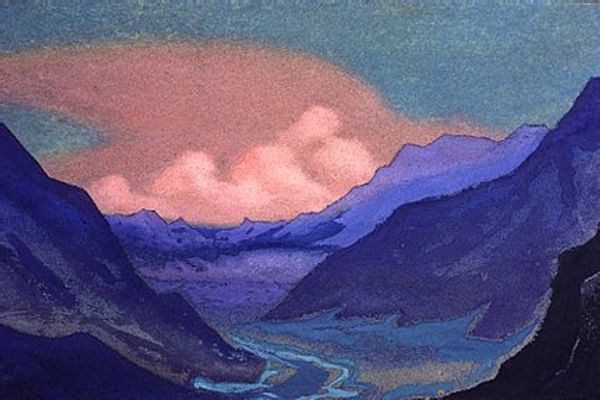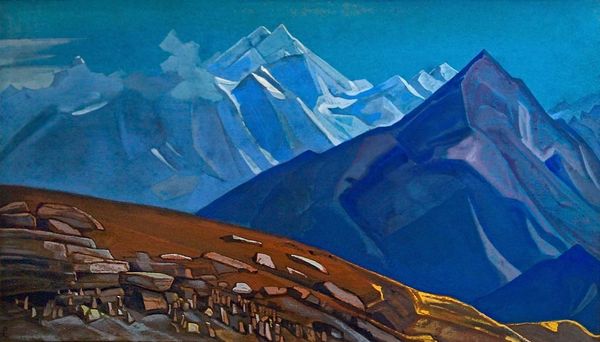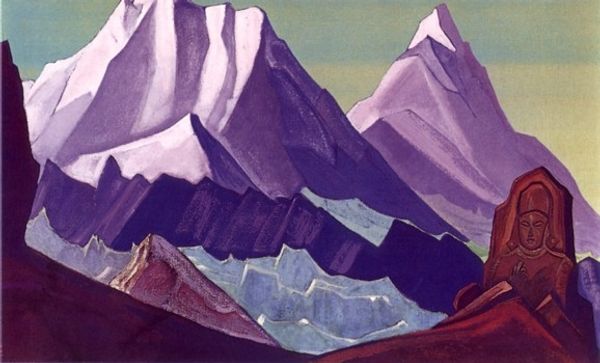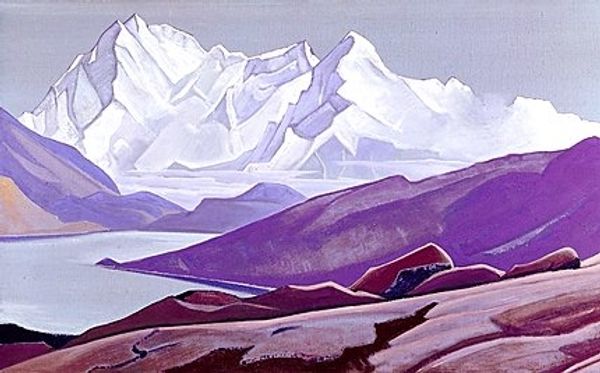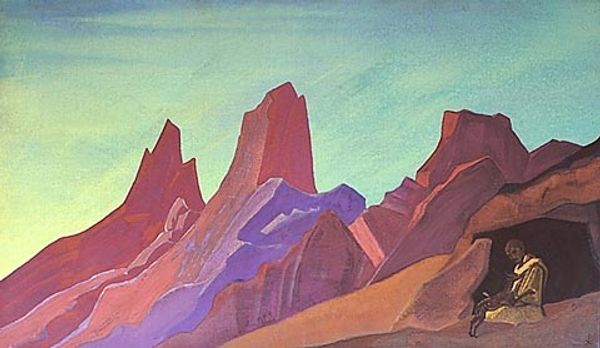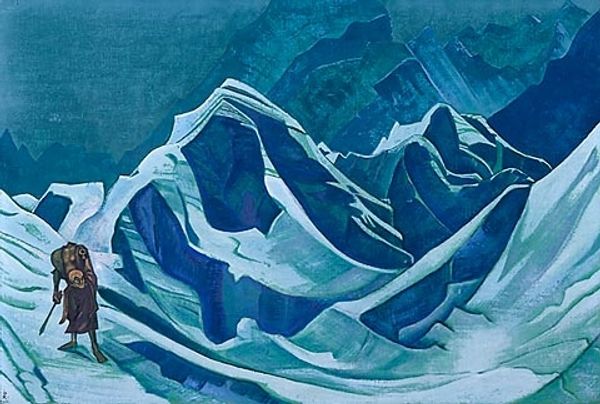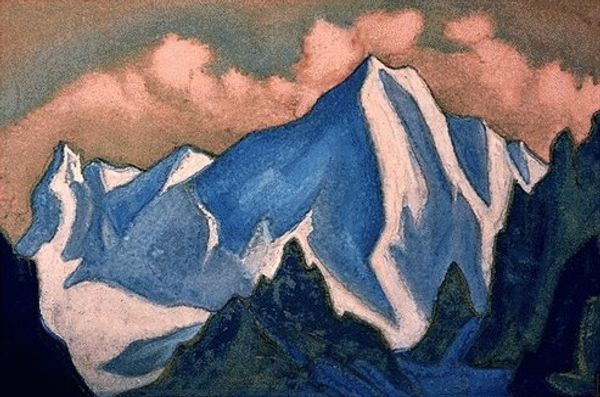
Copyright: Public domain
Editor: This is "Santana," an oil painting by Nicholas Roerich from 1937. I'm immediately drawn to the vibrant colors – the purples and blues of the mountains and water. There's also this figure nestled amongst the rocks on the right. What do you see in this piece beyond just a landscape painting? Curator: This is more than a pretty landscape, absolutely. Roerich was deeply interested in the spiritual and philosophical dimensions of art. Santana, painted in India, blends Orientalist aesthetics with Symbolism. It urges us to consider not just what is depicted, but what the image represents within the context of Indian spirituality and the search for enlightenment. Notice the solitary figure - perhaps a hermit or ascetic - meditating by the powerful waters. How does this figure change your understanding of the overall scene? Editor: It definitely adds another layer. At first, I just saw mountains, rocks and water, but the figure implies a narrative – a journey, maybe? Or perhaps just the importance of finding stillness amidst the chaos of nature. Curator: Exactly! Roerich often used landscapes to evoke inner states of being, tapping into folk art traditions that valued conveying spiritual messages rather than mirroring reality. Considering the political landscape of the late 1930s, the work might even be seen as a metaphor for seeking inner peace and resilience amidst growing global turmoil. How does knowing this affect your understanding? Editor: Wow, that's a powerful thought. So, it’s not just about escapism, but about finding inner strength to face external challenges. It makes the painting much more relevant to today. Curator: Precisely. Roerich's landscapes can become sites of resistance. Art can offer us a lens to reflect on our values, our struggles, and our potential for collective action. Editor: This makes me appreciate the piece so much more, I initially only saw the beauty but learning more about its historical context and symbolism allows me to dive much deeper into the potential meanings. Curator: I'm glad you made the leap; there’s always more beyond initial impressions, once we see how intertwined history and symbolism can be.
Comments
No comments
Be the first to comment and join the conversation on the ultimate creative platform.
